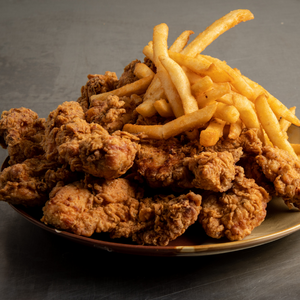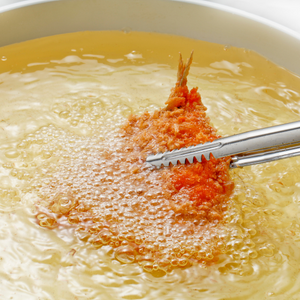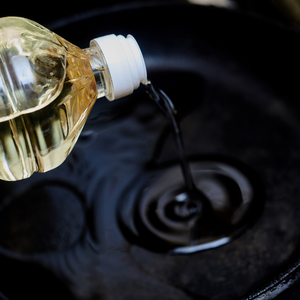Frying oil is a key ingredient in making fried chicken, french fries, onion rings, and many other dishes. But not all frying oils are created equal. Some oils are better for frying than others. That's why it's important to test different frying oils to see which gives you the best golden, brown, and delicious results. Poor oil quality can also impact your customers' health. Keep reading to discover why it is essential to monitor your cooking oil and the different ways to test it.
Why Should Frying Oil Be Tested?
Oil begins to break down and degrade from the moment you start cooking. The fresh, unused frying oil is naturally nonpolar with pure triglycerides - meaning it is still in its natural and pure state. When oil receives heat, oxygen, and moisture from the frying process, the nonpolar compounds transition into polar molecules – producing non-triglyceride by-products. The by-products produced include FFAs (free fatty acids), polymers, alcohols, and cyclic compounds. High levels of by-products negatively impact food quality and can harm customers. Poor oil quality can add higher content of saturated and trans fats, which may increase the risk of heart disease and bad cholesterol. The food might also not cook all the way through, leading to food safety issues and unpleasant flavors.
Common Testing Methods For Frying Oil
Common testing methods for frying oil are important to assess the freshness and safety of the oil. One of the most common tests to determine the quality of frying oil is an FFA test. This test measures the amount of FFA breakdown products present in the frying oil, indicating whether that particular batch is safe for use.
When you put the strip in the oil, a color appears on the strip. The colors are then compared to a color chart for evidence of FFA concentrations. Other physical tests, such as color comparison and odor testing, can help judge an oil sample's overall quality.
Another popular testing method for frying oil is Total Polar Materials (TPM). This method generally requires laboratory analysis and examines a broad array of polar molecules that accumulate in an oil sample during use. Usually, these acids are formed through reactions between oxygen and unsaturated fats or oils. By measuring the amount of TPM present in an oil sample, one can easily determine if that particular batch should be replaced due to its age or other factors.
Which Testing Method Is Better?
Taking the time to monitor your oil quality is important to make sure your fried dishes come out decadent and crisp. With that being said, finding the right kind of method for you and your establishment can take some trial and error.
Pros & Cons Of Each Testing Method
Before choosing your testing method, you must know the pros and cons of each. FFA testing strips have an easy-to-use design. In addition, they do not affect your frying process and can be used on all types of cooking oils. These strips are also known to have an 80% accuracy rate. Each testing strip is single-use, which means you will need to purchase them constantly. It is also recommended to store your strips properly to ensure they are in good condition. If not, improper storage can ruin the strips.
TPM testing methods are known to be over 90% accurate. TPM tests can be built into the fryer’s plumbing or can be done by hand. The TPM readings are typically done during the filtration process, making room for less error. However, these devices require calibration checks every one to three years – which can be costly. The amount of times you need to do calibration checks depends on the frequency requirements of the manufacturer.
Testing Your Oil Without Technology
If you choose the low-tech route, there are a few factors you need to consider when determining the quality of your oil. Below are the criteria you need to keep an eye out for:
- Flavor – Your oil should not alter the taste of your food.
- Texture – Fried food must be crispy and tender, not too crunchy or soggy.
- Appearance – A golden, brown color is the goal; not too light or too dark.
- Strength – The outcome of your fried food should not break and fall apart.
Practices To Improve Oil Quality
Monitoring your oil quality will maintain the condition of your fried foods. There is more to ensuring your oil quality than testing methods:
- Reduce your frying temperatures when possible
- Prevent your oil from making contact with metals, salts, or UV lights
- Filter your oil regularly, with proper cleaning and up-to-date maintenance
- Train staff about proper frying techniques such as how to use and care for a fryer

Get Cooking
So, the next time you’re frying up some chicken or fish, be sure to test your oil first. If it passes the test, then go ahead and cook away. But if it doesn’t pass the test, it’s time for a new batch of oil. And always remember to follow proper safety guidelines when cooking with hot oils.






